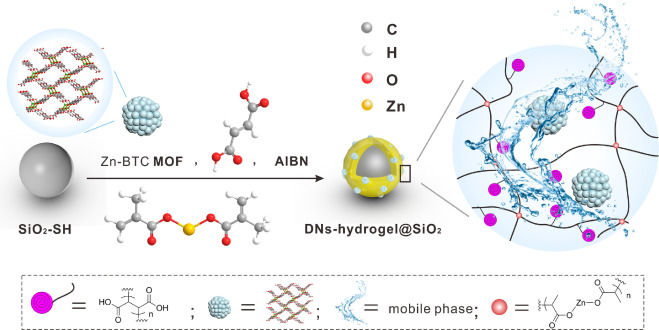Abstract
Hydrogel is a kind of three-dimensional network structure polymer that can absorb water and swell in water. It has been widely used in many fields due to its flexible functionality. We proposed the design strategy of dual-network hydrogel assisted by a metal-organic-framework (MOF) and modified them on the surface of silica (with average particle diameter of 5 mu m and average pore diameter of 76 A). On the basis of effectively avoiding shortcomings such as osmotic pressure caused by swelling, abundant mesh types of composite material also improves the separation selectivity of the stationary phase. A variety of analytes such as nucleosides/bases, antibiotics, organic acids, carbohydrates, alkylbenzenes, polycyclic aromatic hydrocarbons, pesticides and anions can be selectively separated. The research on the retention behavior and the interaction mechanism proves that the column can be used in mixed mode liquid chromatography. By comparing with the optimized chromatographic conditions of commercial HILIC column and C18 column, this new type of stationary phase also has some significant advantages in the selective separation of mixed analytes. This new stationary phase also has excellent acid/base stability. The intraday relative standard deviation of their retention time under acidic conditions is 0.05%-0.26% ( n = 10), and the intraday relative standard deviation under basic conditions is 0.11-0.14% ( n = 10). After optimizing the chromatographic conditions, the efficiency of this new type of chromatographic column can reach 90,300 plates/m (sucrose). In short, a new strategy for applying hydrogel to liquid chromatography with high selectivity and chromatographic separation performance is proposed. (c) 2021 Elsevier B.V. All rights reserved.

Keywords Plus:POROUS CARBONFRAMEWORKSWATER
Published in JOURNAL OF CHROMATOGRAPHY A,Volume 1662;10.1016/j.chroma.2021.462745,JAN 11 2022


